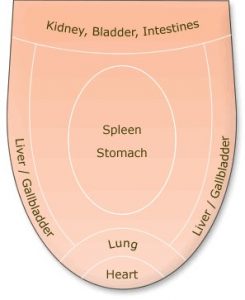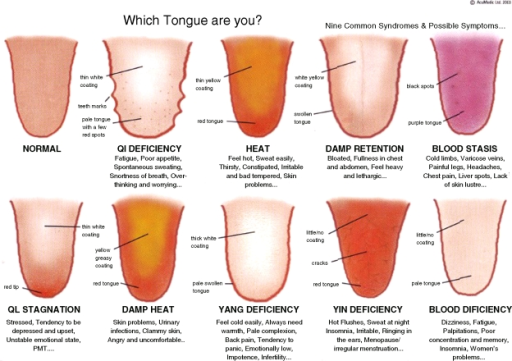Tongue diagnosis is a key factor in creating a Chinese medical diagnosis. For most new patients, it seems odd to stick out your tongue at someone! However, there are many clues regarding the balance of energy laying right on the tongue. People often ask “does it look OK?” after we take a peek. The truth is that we look at the tongue as a method of confirmation of our initial findings.
As an acupuncturist, I ask several specific questions regarding my patients’ health. Understanding the answers to these questions help me to determine which channels are in or out of balance. These answers are subjective. Our objective information comes from feeling the radial pulse on both sides and looking at the tongue. The geography, color, coating, moisture and shape can either support or refute our initial impression.
A healthy tongue is supposed to look like a baby’s tongue. It should be pink, smooth, moist with no coating. As we live our life—with stress, dietary choices, sleep imbalances, etc.—our energy often becomes imbalances and, if left unchecked, can lead to health problems. The tongue is arranged like a map.
Different areas of the tongue correspond with different organs. The top 1/3 corresponds with the lung and heart, the middle 1/3 with the digestion, the back 1/3 with the intestines and bladder. The edges correspond to the liver. The most common tongue presentation are cracks, which indicates a deficiency. Having a “map” gives the 
Another common presentation is a swollen tongue with scallops (“tooth marks”) along the edges. This often indicates a retention of dampness. A person with a swollen tongue is likely to exhibit body swelling, excess mucus or diarrhea. The color of the tongue also holds great clues about the body’s environment. A pale tongue body indicates deficiency of qi (energy) or blood, a red body indicates heat and a dusky body indicates stagnation of energy or blood.
A coating on the tongue is another major clue for acupuncturists. Ideally, there shouldn’t be any! A thick coat indicates a retention of dampness and WHERE this coat is also an important clue. Dampness is typically generated from the middle jiao—in the middle of the tongue. However, when the coat is thicker in the back of the tongue, it is a sign that the dampness has descended into the lower jiao. The color of the coat also indicates the “type” of dampness. A white tongue coat indicates dampness, while a more yellow coat shows dampness mixed with heat. Also, coating can be peeled in certain patches which would indicates areas that have more heat in relation to other channels.
Finally, the color of the tongue body is also of value. A balanced tongue is a light pink color. Disharmonies would manifest as red, purple or pale/white in color. The good thing is that our tongue landscapes can change in relation to our health. Therefore if you see something you don’t like on your tongue, just know that it can change as your diet, lifestyle, etc. becomes more in tuned with what your body needs!


Leave a Reply